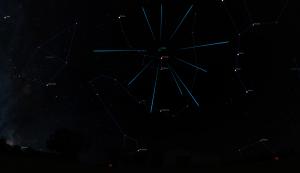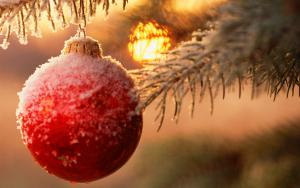Celebration of Space - December 20, 2019
_1576862083_1596573365.jpg)
The annular solar eclipse over Japan on May 22, 2012. Image Credit: Hideyuki KAMON from Takarazuka / 宝塚市, Hyogo / 兵庫県, Japan / 日本
This coming Thursday, December 26, 2019, a stunning annular solar eclipse will occur. Sadly, this event will not be visible for residents of North America, though you can catch it online. The eclipse will start over Saudi Arabia and continue over India, Indonesia, and across Asia. An annular eclipse happens when the Moon is closer to apogee (its furthest point from Earth in its orbit), and does not fully cover the visible area of the Sun. This results in what looks like and ring of fire in the sky, with the Moon blocking out the central region of the solar disk. The eclipse will start at 9:29 pm EST on December 25th, with maximum eclipse happening at 12:17 am EST, lasting for about 3 minutes and 40 seconds. You can watch the event live, compliments of Slooh. The broadcast starts at 9:30 pm EST and continues until the eclipse ends, at 3:05 am EST.
Overnight Sunday, December 22-23, 2019, the annual Ursid Meteor Shower will peak. A rather slow going meteor shower, the Ursids will bring an increase in regular meteor activity of about 10 meteors per hour. Considering that the Moon will be practically non-existent that night, rising at 4:21 am as a super thin 8% waning crescent, the skies will be perfect for meteor watching. Weather at this time for Southern New England, looks pretty good, with cloudy skies present during the nighttime hours, clearing out around midnight. Considering the morning hours are the best times to catch the shower, this puts us in the clear. The Ursid meteor shower is the result of Comet 8P/Tuttle, a periodic comet with an orbital period of 13.6 years. As 8P/Tuttle orbits the Sun, it crosses Earth’s orbit and leaves a debris field of tiny dust – rice sized particles of ice behind. When Earth orbits through this debris field, the particles are captured in Earth’s gravity and enter the atmosphere at rates of about 20 miles per second, and burn up. Meteors will appear to radiate from the bright star Kochab in the constellation Ursa Minor. If setting out to watch the Ursid shower, plan to arrive at dark location, free of artificial light, and be there for about 1:00 am. Lay on your back with your feet to the North and look to the zenith (top of the sky). This shower is not as active at the Geminids, Quadrantids, or Perseids, though with the meteor shower weather attack of 2019, we have to take what we get. If you catch a photo of an Ursid meteor, be sure to post it on the Visitor Posts section of our Facebook page and we’ll share it on our timeline. Note, we will not share photos of airplanes, even if you think it’s a meteor.
Tomorrow, Saturday, December 21, 2019 at 11:19 pm EST, Earth will reach the point in its orbit where the Northern Hemisphere will be at maximum tilt (23.4°) away from the Sun. This is the Winter Solstice and marks the first day of winter in the Northern Hemisphere. On the Winter Solstice, we will experience our shortest daytime period of the year in the Northern Hemisphere. Locations north of the Arctic Circle will have 24 hours of night with corresponding locations south of the Antarctic Circle experiencing 24 hours of daylight. In the Southern Hemisphere the Sun will cross the zenith (directly overhead) along the Tropic of Capricorn, resulting in the Sun crossing the sky 23.4° below Earth’s equator. All that aside, the Winter Solstice brings all the fabulous celebrations we have during this time of the year. It’s a harbinger of the cold long dark ahead as we descend into the winter, though also the point that the days start to get longer as we begin our shift towards the warmer season. So take a moment at noon tomorrow to step outside and notice how low the Sun is in the sky and welcome the reason for the season as we make our final plunge into holiday bliss.
Have a fabulous Winter Solstice from all the astro-geeks at Frosty Drew Observatory!
-Scott
- Author:
- Scott MacNeill
- Entry Date:
- Dec 20, 2019
- Published Under:
- Scott MacNeill's Columns



